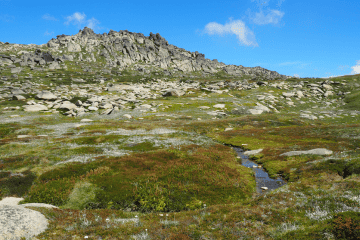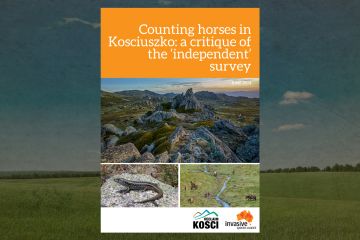
Let there be no doubt. The plan to allow 15,000 amateur hunters into NSW national parks is not motivated by good environmental policy.
At a superficial level, an offer to allow access to our national parks for volunteer hunters keen to shoot deer, goats, pigs and other feral animals sounds irresistible.
Yet the evidence shows that recreational hunting managed by the Game Council is unlikely to provide environmental benefit, and could lead to environmental harm and place at risk the public’s enjoyment and safety.
The Game Council was set up in 2002 after an earlier political deal between the Labor Government and the Shooters Party. It is a highly unusual arrangement for a statutory authority. The board must have a majority of hunters, ensuring that decisions never get made against hunters’ interests. Government funds this sporting body to licence recreational hunters on public and private land.
At the last minute, the enabling legislation was renamed the Game and Feral Animal Control Act, the last three words tacked on to deceptively dress up the arrangement as a public good. National parks at that time were spared.
Despite their success, the Shooters Party did not let up on their campaign to get access to national parks.
Once the Game Council was set up and it registered hunters to roam public lands with rifles, long-bows, antique muzzle-loaders and hunting dogs, it tallied seemingly impressive body counts of feral animals killed: 27,099 rabbits, 5100 foxes, 9341 goats and 7988 pigs were shot across about 2 million hectares in state forests in a five year period.
But feral animal control is not about carcass numbers. It is about programs to achieve defined goals, typically requiring 50-90% reduction in a local populations over a short period, necessitating use of the most effective methods. That is why park managers usually don’t shoot foxes; poisoning and trapping are more effective. It is why there is concerted effort around habitats of animals like the endangered brush-tailed rock wallaby to remove goats. It is why shooting 27,000 rabbits over five years will have little effect on a population measured in millions. If the Game Council’s ten-year ‘control program’ was reviewed by biologists it would be revealed as a sham.
Deer hunting is a good example of how hunters assist the spread of a serious pest. Hunters are widely known to move deer (and pigs) to provide for future hunting and a few have been caught in the act. They mostly target the males with antlers, leaving females to breed. Hunters are not effective or systematic at controlling deer, focusing on the most accessible areas where hunting is easy, leaving deer in more remote or rugged areas to breed and spread.
Hunters have been pointing to Victoria’s hunting program to support their cause. Yes, there is some deer hunting in four national parks, but deer numbers in these areas continue to grow and the program is widely discredited by Parks Victoria staff. Deer hunting in Victoria is nothing more than a sport and hunting in these national parks was inherited from a time before the parks’ creation. Its presence is a statement of hunters’ political influence rather than their effectiveness.
There is one program in Victoria where sporting shooters are effectively used. Murray-Sunset National Park is closed to the public for a short period each year and rangers supervise about 20 volunteer shooters targeting goats.
The danger is that by allowing hunters into national parks pretending that this is pest control draws resources away from legitimate feral animal control programs. Wary animals such as deer, goats and pigs can also become harder to control in ranger run programs.
In Australia and New Zealand there are numerous examples of hunters opposing effective cull programs that threaten their feral ‘game’. In NSW the Game Council actively lobbied against listing deer as a ‘key threatening process’ under environmental laws.
If a landholder wants a recreational shooter to control deer on their land, a Game Council licence is needed and they are not permitted to use the most effective method – shooting at night with spotlights.
We are at a turning point in the control of feral animals in NSW. We can either pretend to do something by handing the job to hunters who will let feral animal populations expand, losing at the same time that feeling of safety and peacefulness we cherish in a national park. Or we can focus on science-based programs and use the most effective and humane methods of stopping the spread of feral animals across all lands – which may sometimes include the managed use of volunteer shooters
Any decision to permit people with guns into our national parks must require compelling benefits that outweigh the risks. The Invasive Species Council wants to see fewer feral animals in our parks and shooting will be essential to achieve this.
The serious problem is that the deal between the Shooters Party and the O’Farrell Government involving the Game Council offers no benefits and excessive risks. O’Farrell’s decision to support the Shooters Party’s enabling Bill in Parliament in June locks in this retrograde direction.
Feral animals are one of the greatest threats to our wildlife and our national parks. Putting recreational hunters in charge will only make it worse.
To find out more, see ISC’s fact sheet Recreational Hunting NSW: Claims vs Facts
This piece was first published in The Drum and the Colong Bulletin in July 2012




